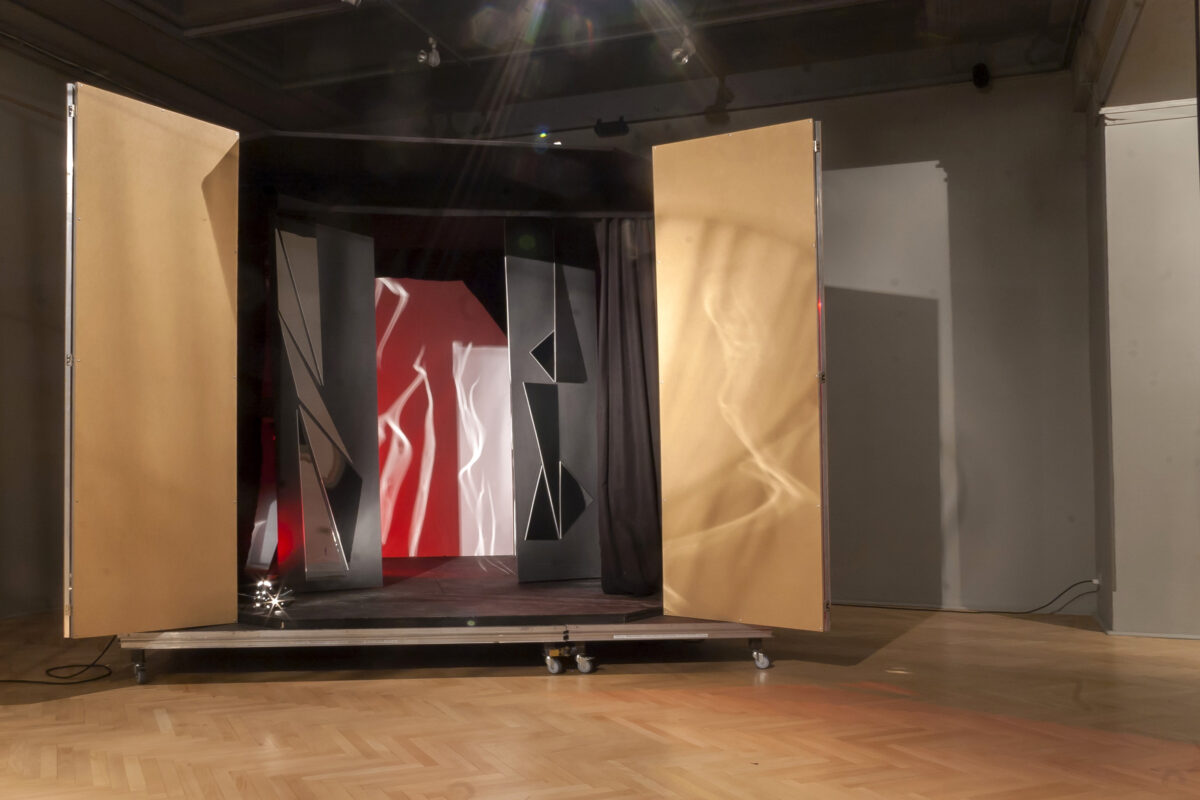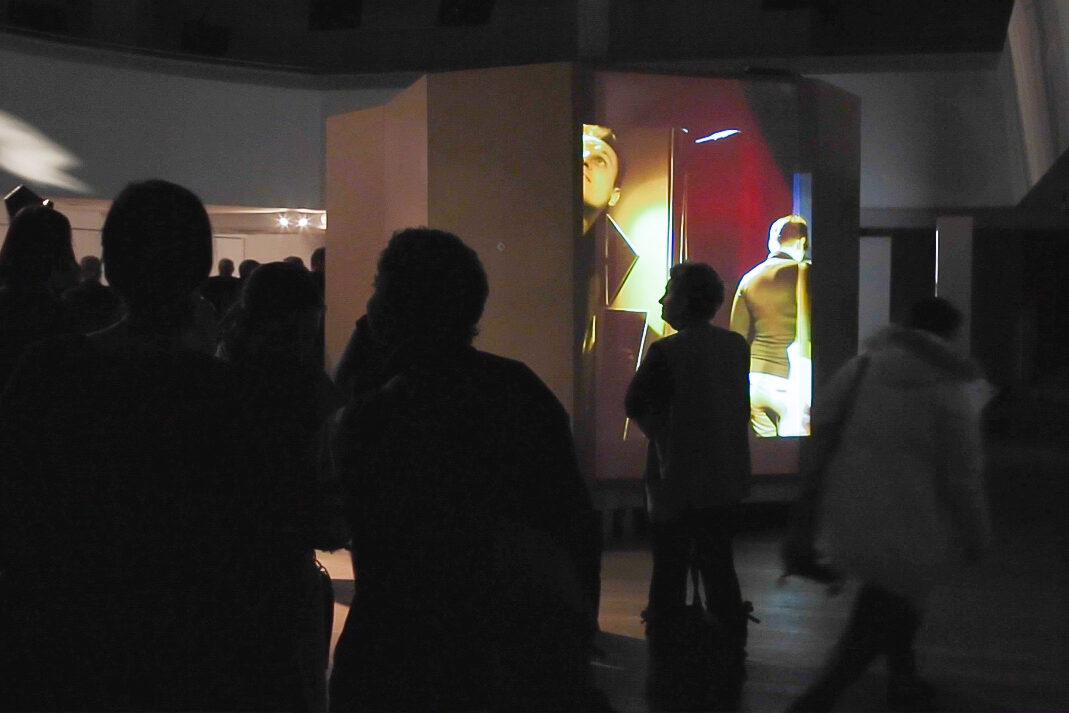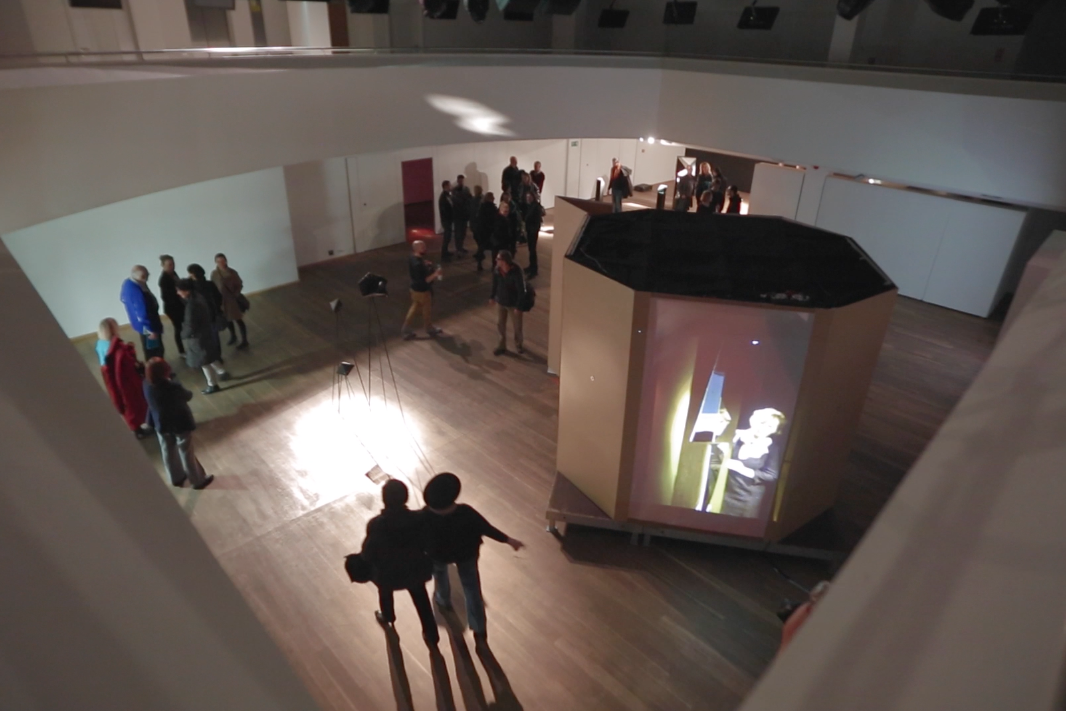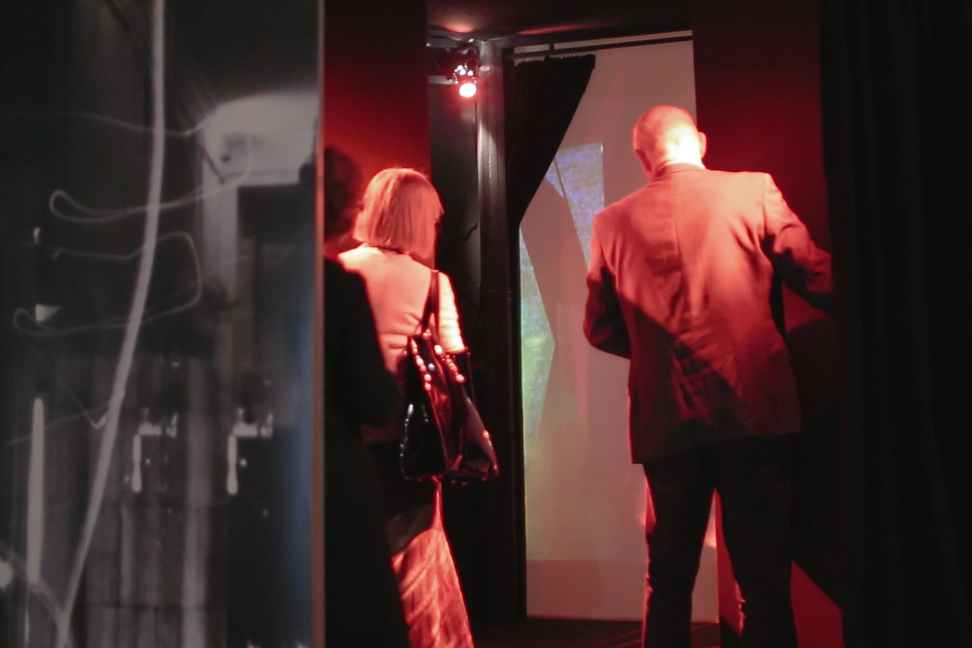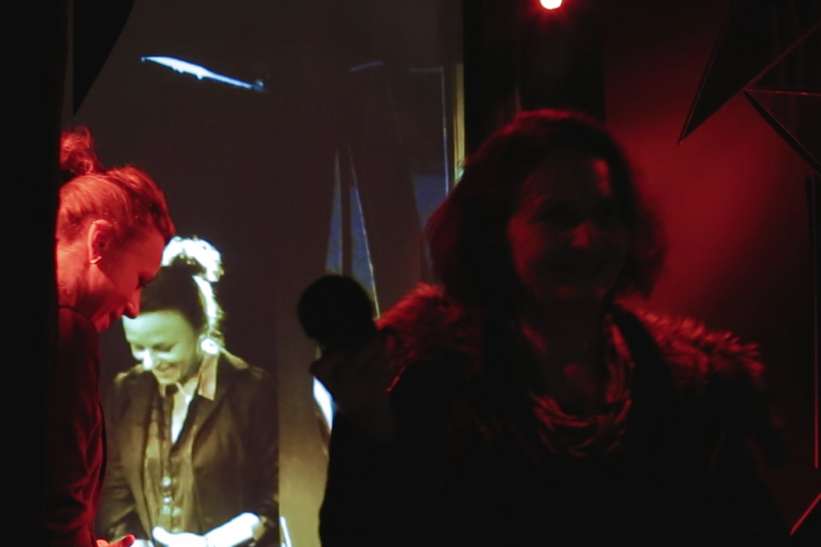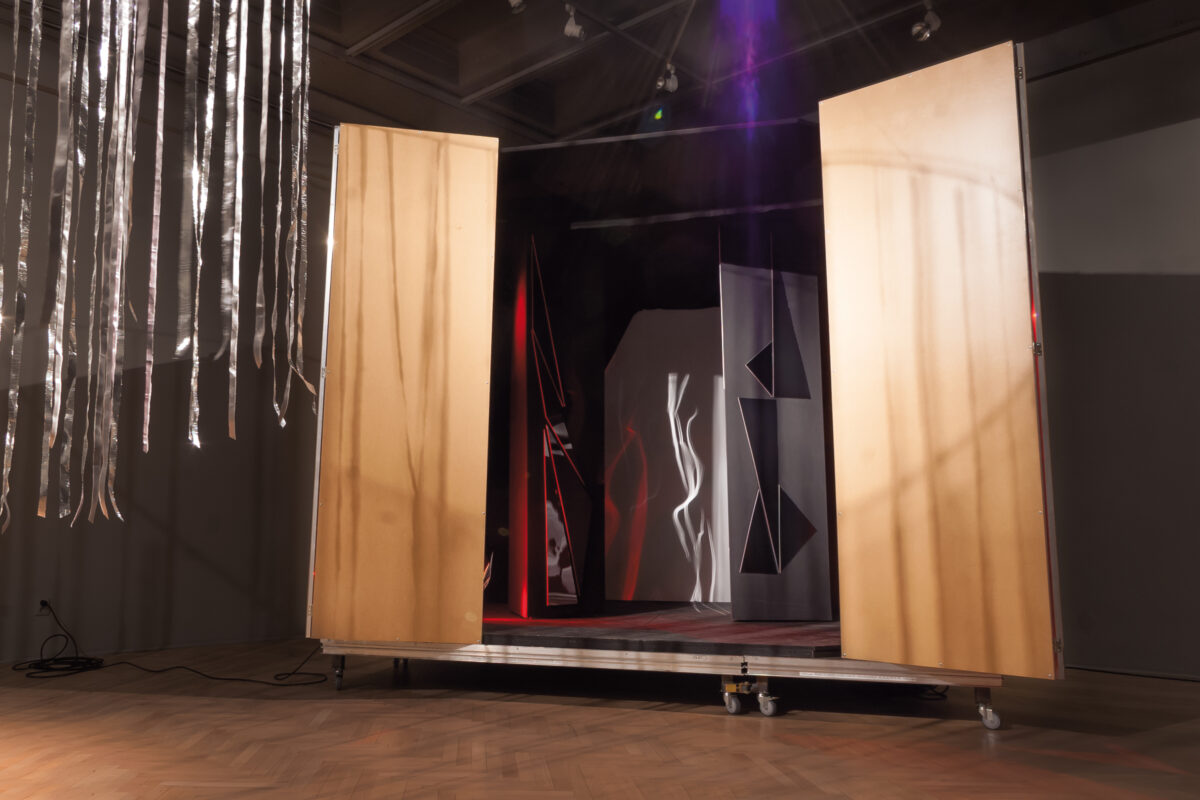Camera-stage 2014
in cooperation with Francis Ruyter
(plywood, aluminium, molton curtains, mirror periaktoi, projection screen, cameras, par lights, beamer, max mps)
exhibition views: State Gallery of Art Sopot 2015, Studio Gallery Warsaw 2014
The installation “Recording Theatre” is a stage that is also a camera, where viewer becomes performer inside an experimental recording device. There are various small openings, lenses of a camera obscura, and multiple fields of focus, a quantum approach to ocular and historical perspective. A wall opens to form a proscenium. The stage is on wheels to have a relationship to a medieval nomadic theater, or time machine. The two-dimensional photograph becomes a four dimensional space, joining archiving processes and lived experience. Authors are removed from the physical process of photographing; pictures are not taken, but rather they take place.
(…) one is not able to determine unequivocally who is the viewer and who is viewed, who is the spectator and who is the actor – „Recording Theatre“ illustrates this aspect especially strongly by questioning the ontological equivocalness of the receiver, the participant. The presence of the viewer is the precondition of a theatrical situation, however, the viewer‘s status here is flickery, ambiguous and multidimensional. It is so because the viewer who is external to the device both gazes at (the machine) and is being gazed upon (by the machine). The viewer treats the machine as an object, simultaneously being the object of the machine. Finding himself inside the apparatus, he can feel safe, something like a voyeur hidden to peep at space and people through crevices in the wall. It is enough, however, that the curtain on one of the walls of the black solid object is opened and the gazer will find himself the centre of attention, becoming alone on stage against coincidental eyes and gazes of spectators. (Barbara Świąder)
.
.
.
.
.
